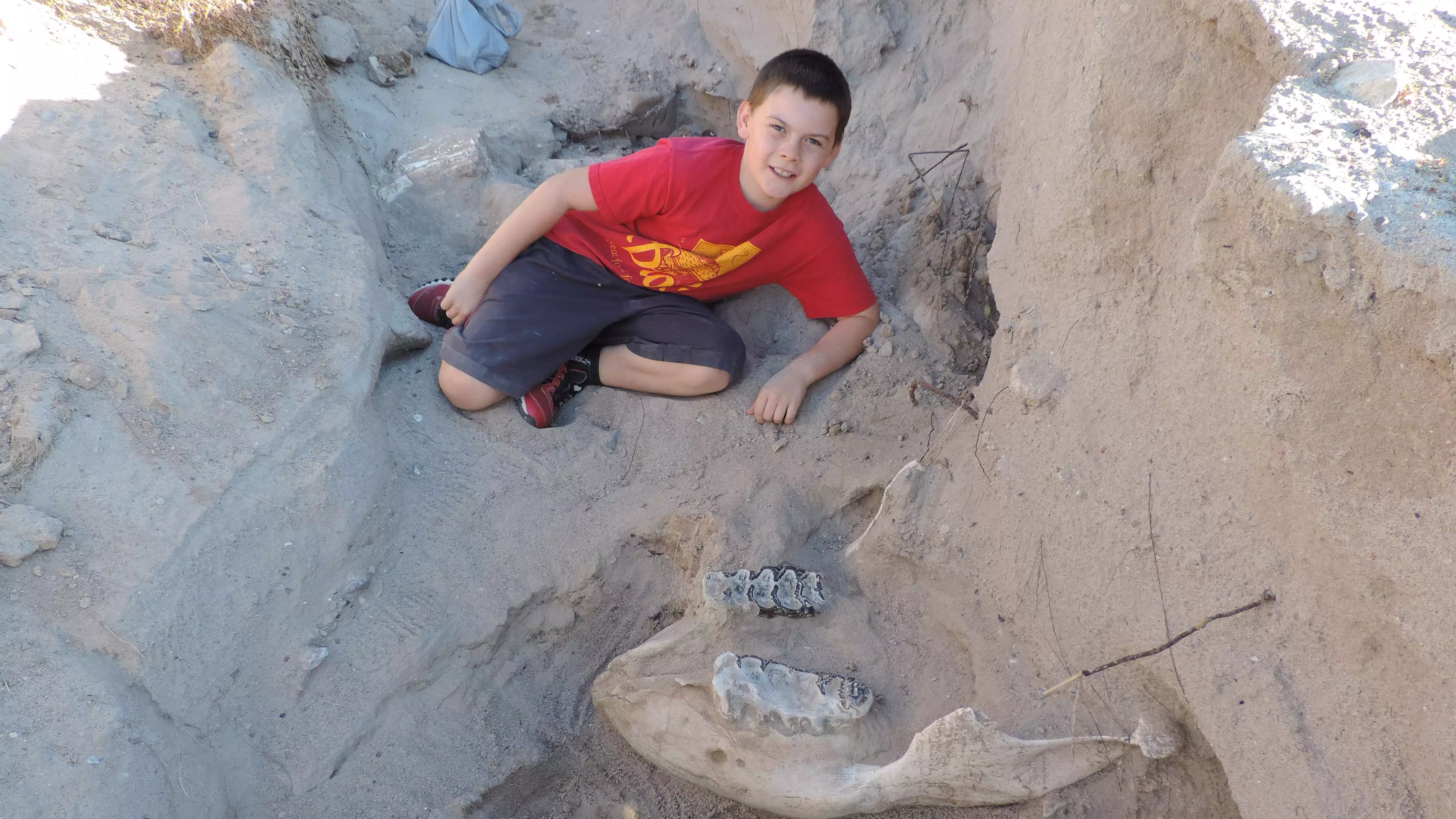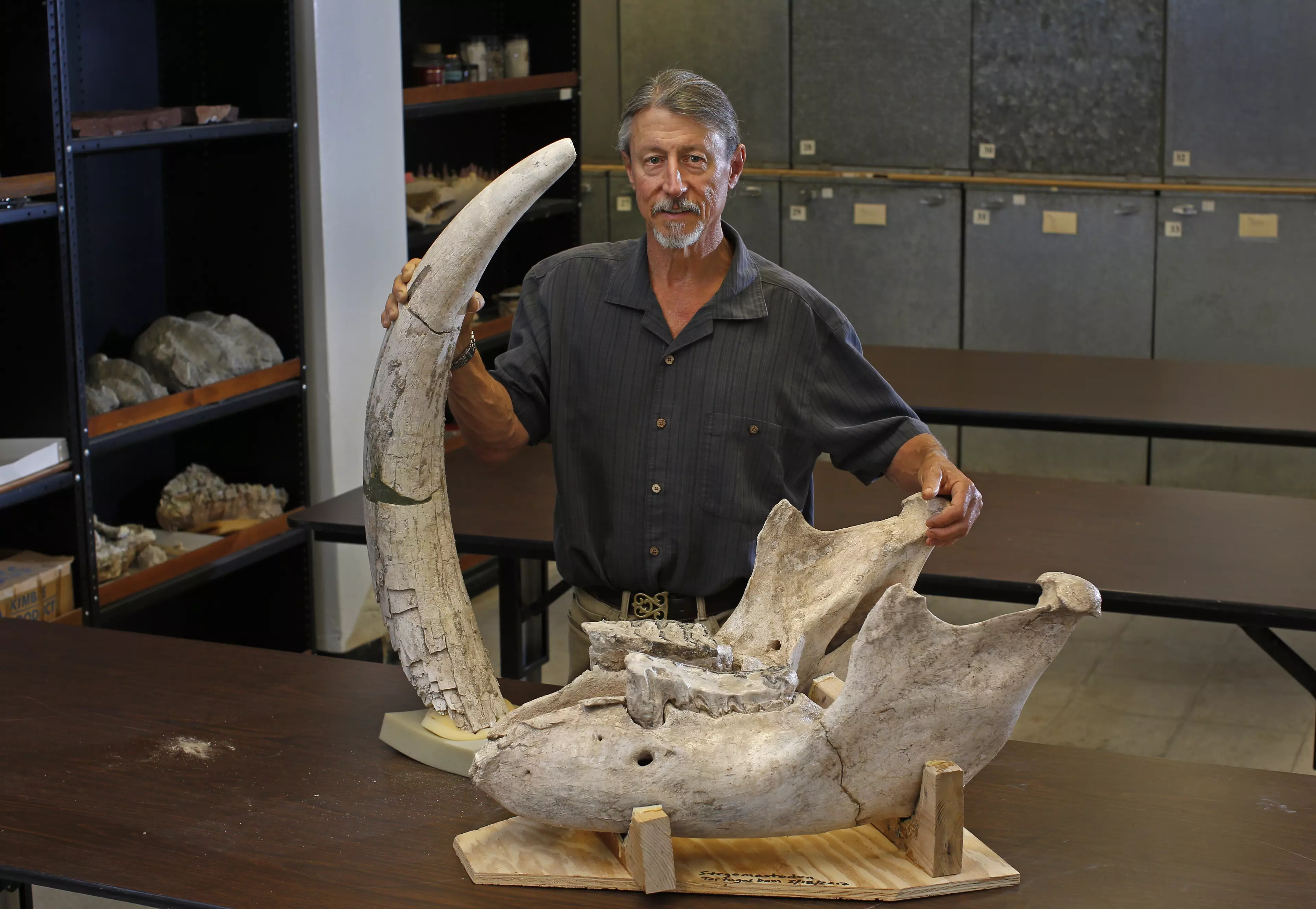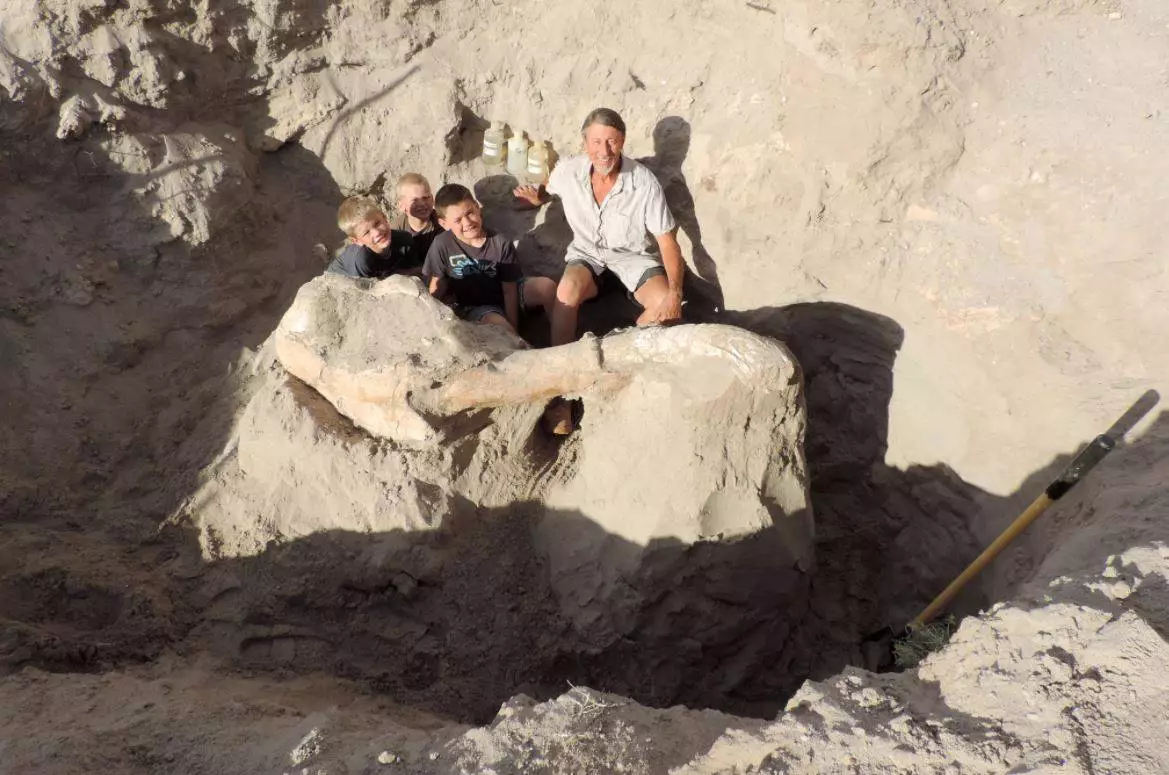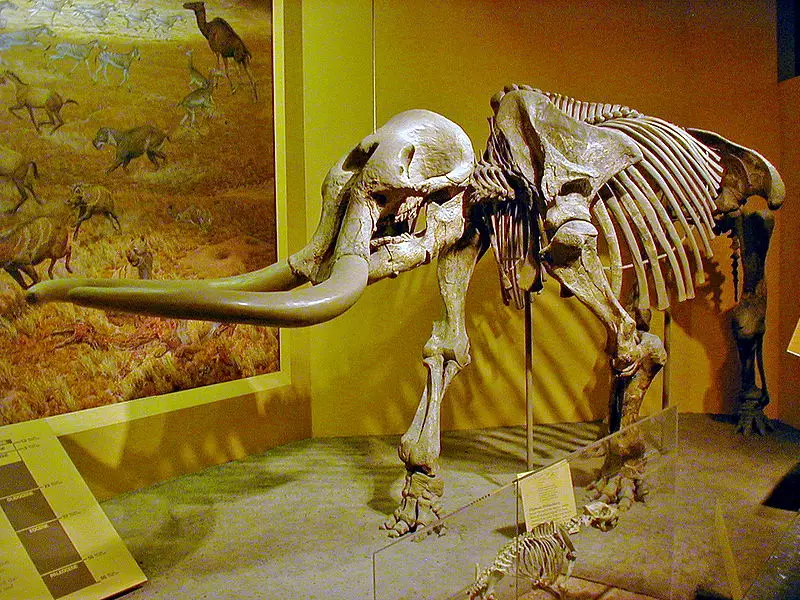
A 10-year boy's accidental discovery in an American desert led a university professor to a uncover a rare 1.2 million-year-old dinosaur skull.
"I was running farther up and I tripped on part of the tusk," said Jude Sparks, who had been hiking in the Cruces Desert with his family when he came face-to-face with the fossil. "My face landed next to the bottom jaw. I looked farther up and there was another tusk."
Advert
The Sparks family contacted New Mexico State University (NMSU) biology professor Peter Houde in November, after seeing him interviewed in a YouTube video about a similar fossil.
"A stegomastodon would look to any of us like an elephant," said Houde. "For the several types of elephants that we have in the area, this is probably one of the more common of them. But they're still very rare. This may be only the second complete skull found in New Mexico."

Professor Peter Houde with a Stegomastodon fossil. Credit: Peter Houde/NMSU
Advert
After the family contacted Houde, the jaw and two pieces of tusk were taken to the Vertebrate Museum at NMSU. In May, the family joined a team of students and professors who worked for about a week to carefully unearth the skull.
Houde applauded the Sparks family's decision to do the right thing in contacting him about their find. He encourages others who might come across fossils to reach out to an expert rather than try to dig it up on their own.

Professor Houde with the Sparks brothers and the fossilised skull. Credit: Peter Houde
Advert
"As you can imagine, when people find out about these things, they might be tempted to go out there and see what they might find themselves and tear up the land or they might hurt themselves," Houde said.
"To be quite honest, all these fossils from this area are radioactive and especially for children, not something you would want in your home."

Stock image used. Credit: WolfmanSF/Wikimedia Commons
Houde estimates the entire skull could weigh a ton, with ten people needed to complete the excavation.
Advert
After the skull was unearthed, the NMSU team carefully coated the fossil with plaster and placed wood braces to protect and support it. The skull was lifted from the dig site by a front-end loader and placed on a flatbed truck for the trip back to the university.
The stegomastodon fossil will eventually go on display following its complete restoration.
Topics: Dinosaurs